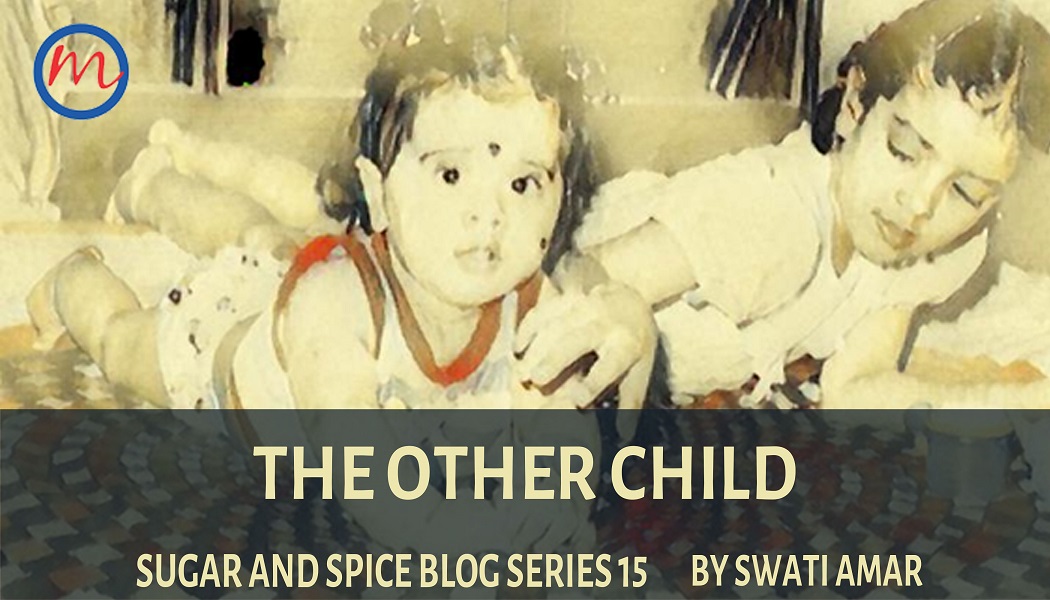I am dedicating this blog to Chinky, Niky’s sister and to all other siblings of Type 1 Diabetics, because they have to traverse the challenging journey along with their family that is trying to cope with the demands of managing T1DM of one child. Simply put, T1DM condition impacts the entire family, all the time, even if the child becomes an adult! The stress is more when the T1D child lives in the family with the parents and the sibling (s).
Personally speaking, I believe no parent can treat their children ‘equally’ at all points in time. The spirit of unconditional and ceaseless love is more important that the overt act of expressing love, which cannot be quantified as ‘equal measure’. For e.g., if a child is quiet and introverted and another is gregarious, we may see the mother or the father trying to encourage the quieter child to be more participative in an event. Or if a child is more aggressive, the parent may have to take punitive measures such as grounding the child more often and channeling the aggression through more physical activities. Each child has different experiences in the environment and tries to cope with stress and negative circumstances based on its own nature as well as the learning it has received from the parents and through observation, and the demands of the situation and the people involved. Children tend to act in a more impulsive manner at a younger age. Some children tend to keep quiet and not react, but the impact of an unsavory incident stays etched in the child’s memory, either as repressed or changed perception. Social disability imposed upon children who have to deal with their own health issues and at the same time meet the expectations of their school or society, matching up to other healthy children, cause greater stress and such children need more succor and help from their parents. This places a huge demand on the parents, apart from the physical needs of handling a T1DM child or any child with a disability that needs more time and attention.
It is indeed tight-rope walking for parents to ensure that all their children grow up to be emotionally stable and healthy adults. In the case where one child has a disability, often the sibling feels neglected. The truth is, the sibling is indeed often neglected. There is no denying that.
Management of T1D is a round-the-clock exercise, both for the parents and the child and sometimes the sibling. Apart from managing the sugar levels of the child, the parent has to also keep educating the child on the need for portion control, exercise and taking insulin injections, testing blood sugar levels on time etc. It is only now sensors have made a foray into the self- monitoring scenario in India, which have made testing of blood sugar levels easier, dispensing with frequent finger pricking. And this is accessible only to those who can afford. Back then, every time the child had to take insulin or eat food or do an exercise or a sport, it was important to check the sugar levels.

Then there is the fear of hypoglycemia or low blood sugar levels, which happens more often as soon as T1D is diagnosed and the family is just learning how to handle adverse events. Families of T1D children will definitely have to face a few low sugar episodes when the child falls unconscious, or has convulsions and have to ensure the child is given glucose or sugar immediately, or admit the child to a hospital to stabilize sugar levels. They also have to inform the school and educate the teachers about how to act when the child is seen to be disoriented, confused or on the verge of becoming unconscious. The threat of hypoglycemia is real and parents do have to be alert, even when they are asleep! In the case of a girl child who has started menstruating, the challenge is even more because the sugars behave erratically before, during and after the periods. In the case of Niky, she always had low blood sugars on the fourth day of her period, during early mornings!
Parents also have to contend with the other rigors that assail healthy children such as examinations, issues with classmates, teachers, sibling fights, facilitating studies at home, tuition classes, catering to extracurricular interests of the children, health issues of the second child or their other children etc. And all these need to be done even if both the parents go to work, in which case they also need caretakers and baby-sitters till the children become independent, they need to frequently monitor the T1D child during work hours, calling the child, teacher or the sibling every now and then, at least initially… the list is endless! On the top of everything, parents have to put up a brave front and given an impression they are in complete control and all is well!

Where does this situation leave the other child?
Siblings adjust to having a brother or sister with a disability in diverse ways. However there are not many studies that have been done on emotional and behavioral aspects of a sibling of a T1D child. One study found that siblings were better adjusted than what was believed. Poorer sibling adjustment were higher when parental stress levels were high, or sibling temperament was difficult or when the T1DM child had poor adjustment, and also due to negative sibling perceptions of diabetes and its impact on the family.
Yet another study found Type 1 DM siblings did not report increased behavioral or emotional dysfunction relative to children in the general population and, according to their parents, were even better adjusted than their peers. Parent and family factors were predictors of sibling adjustment than siblings’ own experiences of stress and coping. Socio-economic status , past attendance at a sibling support group, parent stress, family time and routines, family problem-solving and communication, and family hardiness-predicted sibling adjustment difficulties.
How did our ‘other child’ cope with the unusual circumstances that were a constant part of our family life? How did it impact Chinky’s behavior, her performance in school and other activities? How did she handle her own difficulties and stress arising out of situations that were not conducive for her? Especially given that she was a girl and was brought up in a family with liberal values, but had to function in a traditional society?
While I will enumerate on the growth and development of our ‘other child’ in the next blog, I will conclude with the following words:
“Stay true to yourselves and your intentions of keeping the family together, developing transparent communication channels, enabling your children to understand that they have a strong support system in the family and the fact that they receive complete acceptance and unconditional love from their parents. At the same time kids should know they would be subject to parental rules and ways they think are appropriate for bringing up their children as balanced and emotionally stable adults.”
Building trust is important and is a continuous endeavor on the part of the parents. At no point can they give in to their frustrations. Nature has its own way of establishing deep roots and we as parents should have faith in this phenomenon.
Trust is everything. It is possible.
Note: In this series, I will be putting down facts and events that have happened to me as a matter of fact. Anything I say in these articles is based on my own understanding and experiences and not on any scientific research. I would also like to mention here that I would be drawing upon those experiences of my eventful life, which I believe are relevant to the discussion of the emergence of autoimmune conditions in my child, who we think is different from many other children. I will be trying to make it as relevant to parents of T1D children as possible, but with a plea not to infer anything, compare or follow any of the practices we as a family followed. Simply because, every family is different, every child is different and so are circumstances. The takeaway should be confined to the existence of various possibilities, opportunities and a positive approach toward creating a fulfilling life for your child.




